It is important to have confidence in the integrity of the systems which you use for testing peripherals. For the most part, once the test system is configured properly it will be able to test reliably and give consistent repeatable results.
But there is a definite weak link in a typical peripheral test setup – the cables, backplanes, and other components used to connect the peripherals to the test system. Connectors can wear or become dirty, components within backplanes and terminators can fail, cables can become crimped and damaged. By the time these problems are occurring you may be seeing tests fail with bus parity errors or unexplained bus resets.
To keep a high level of confidence in your test system we recommend a periodical checkup of the peripheral data path. Depending on the level of use we recommend that you use the SCSItoolbox to run the High Speed Data Test and the Cable Integrity test at least once weekly on all of your test systems. These tests run data patterns designed to expose these exact problems. Be sure to connect a known-good disk drive to the far end of your cable – then run each of these tests. Our examples will also show the use of BAM to provide more information.
The tests are found in the SCSItoolbox Disk->Test menu as shown below:
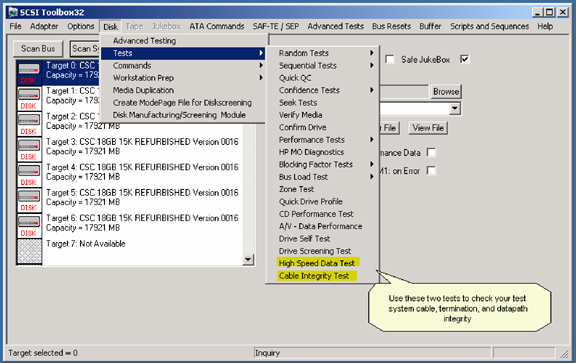
First, run the High Speed Data Test – and for each of your test systems keep a log book, recording the resulting data transfer speeds as shown below:
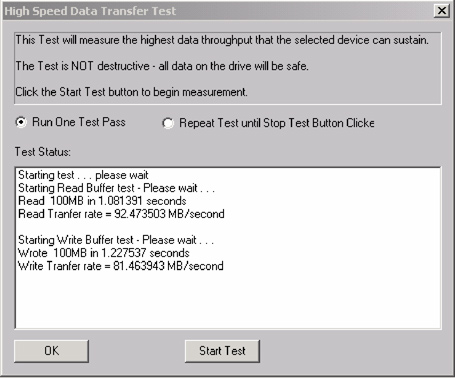
Use BAM to capture the test as you run it, then use the Trace Performance Analysis tab, recording the read and write data transfer rates and IO latency rates in your log book –
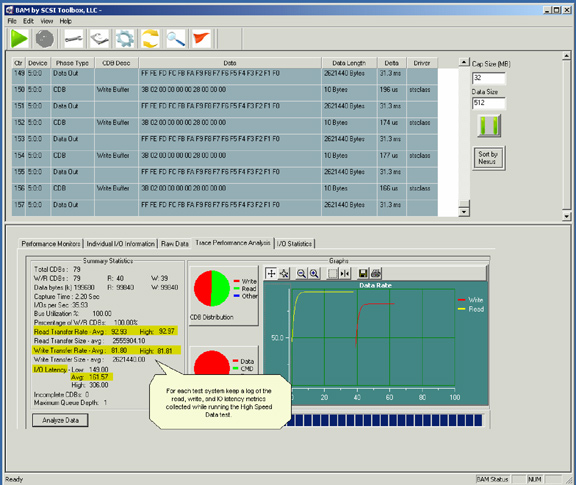
If you notice a change in these numbers, the transfer rates dropping or the IO latency times increasing, thoroughly check and replace any worn cables or connectors.
On parallel bus systems be sure to also run the Cable Integrity test – a test designed to find crosstalk and termination issues on parallel SCSI buses
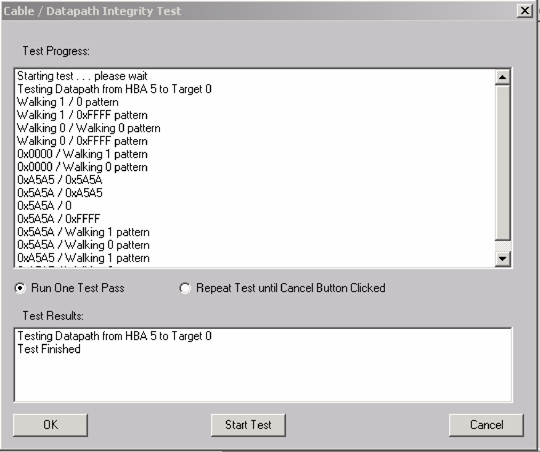
Use BAM to capture this test, and as before keep a log of the results
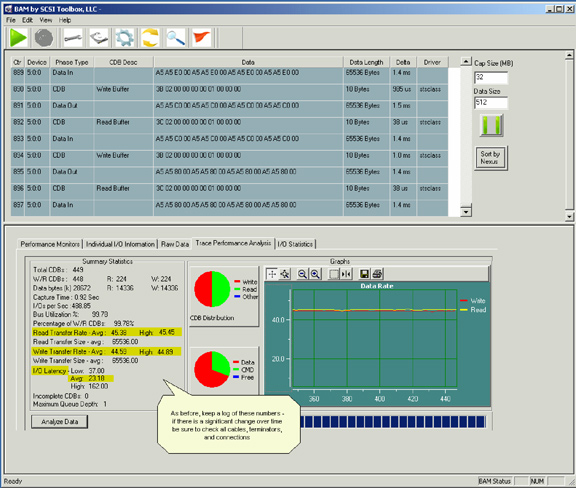
By simply setting up a regimen to run these tests periodically you can have a high level of confidence that your test system is solid and reliable.